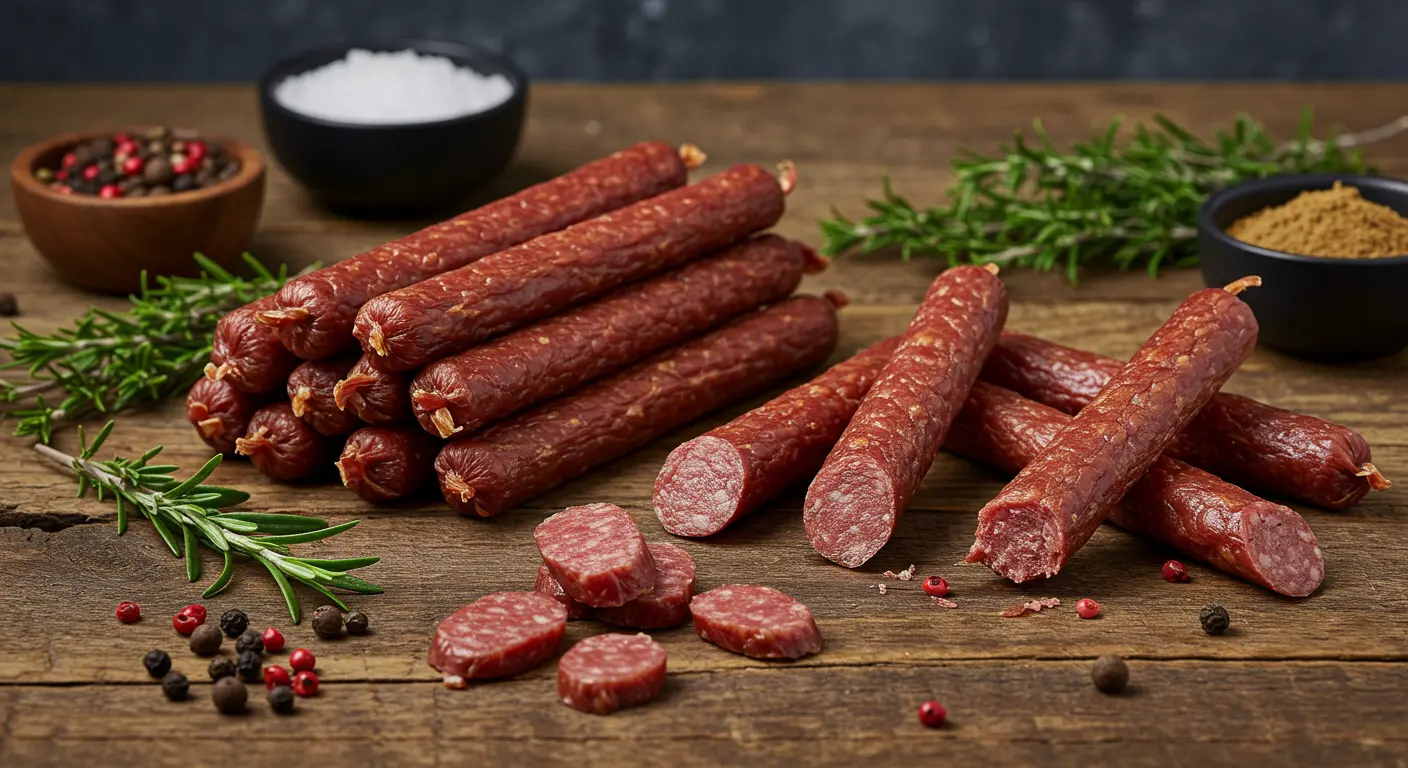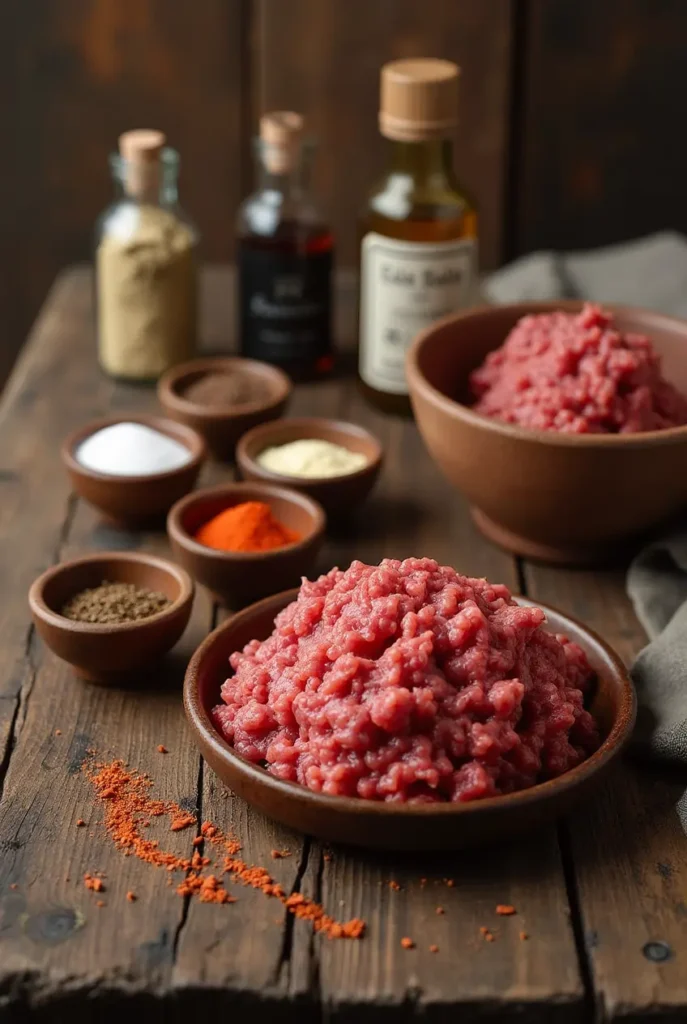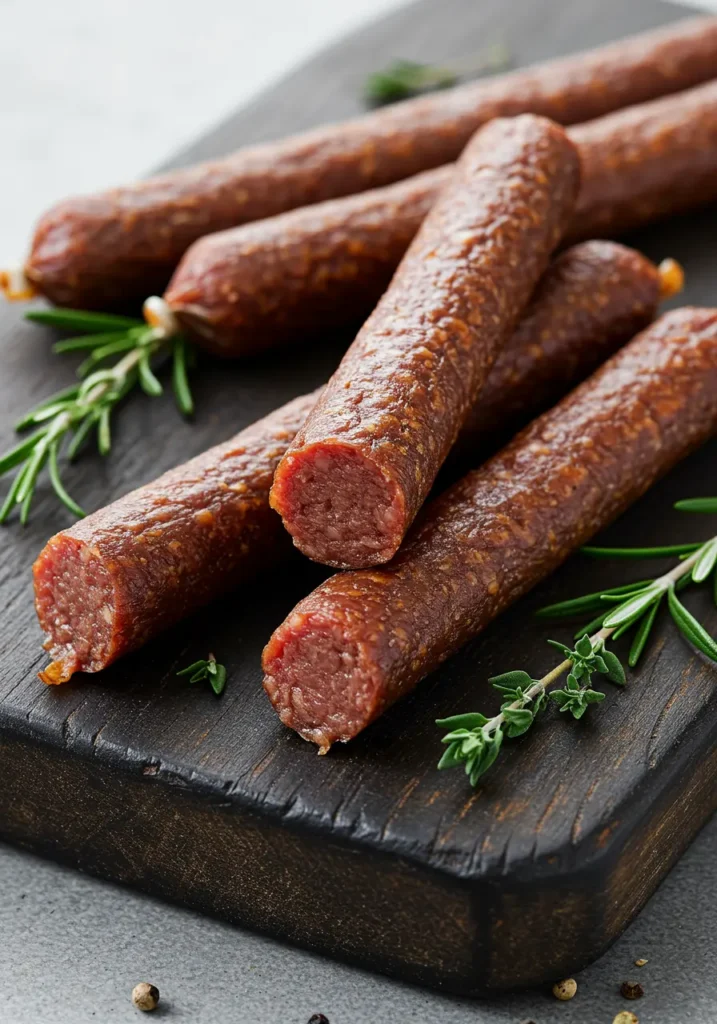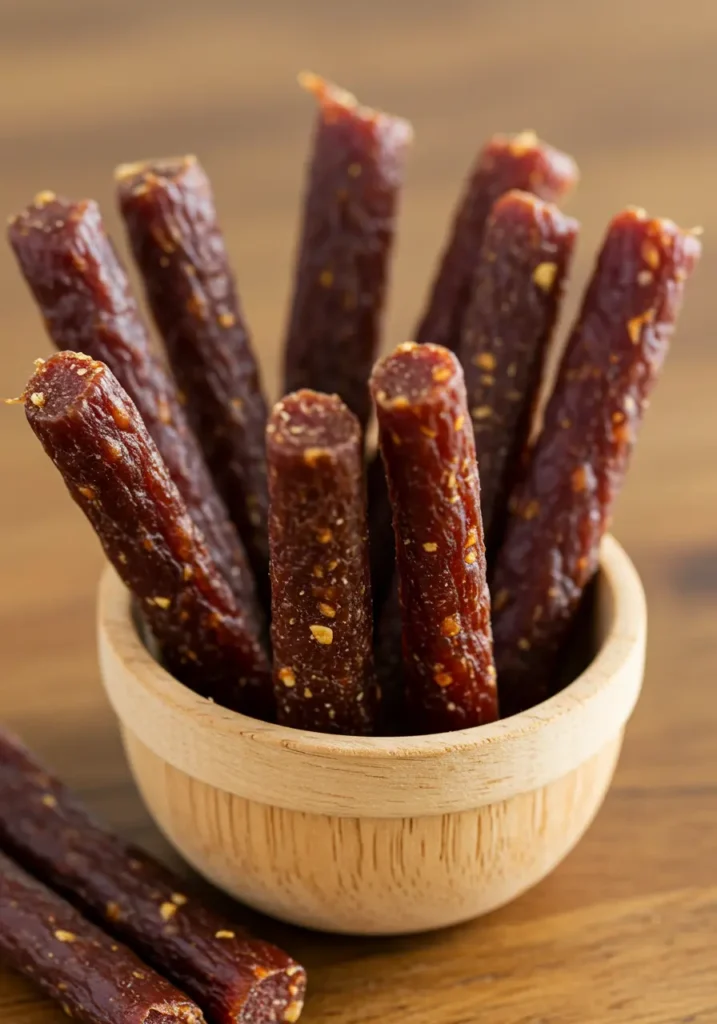How to Make the Best Beef Sticks for Every Diet Plan

In the world of protein-packed snacks, few options rival the satisfying chew and rich flavor of homemade beef sticks. Whether you’re following a keto regimen, paleo lifestyle, or simply looking for wholesome snacks to fuel your day, jerky sticks offer a versatile solution that can be customized to complement virtually any dietary approach. This comprehensive guide will walk you through everything you need to know about crafting delicious beef sticks tailored to different nutritional requirements, ensuring you always have a convenient, protein-rich option on hand.
Table of Contents
Why Homemade Beef Sticks Trump Store-Bought Options
Before diving into recipes and techniques, it’s worth understanding why making your own beef jerky sticks at home surpasses purchasing commercial varieties. Store-bought Jerky sticks often contain preservatives, artificial flavors, excessive sodium, and hidden sugars that may contradict your dietary goals. By contrast, homemade jerky sticks allow for complete ingredient control, enabling you to:
- Select high-quality, ethically sourced meat
- Adjust seasoning to match your taste preferences and dietary restrictions
- Eliminate unnecessary additives and preservatives
- Customize the macronutrient profile to align with specific diet plans
- Create unique flavor combinations not available commercially
This control is particularly valuable when adhering to specialized eating patterns that restrict certain ingredients or require specific macronutrient ratios.
QUICK RECIPE CARD
- Prep time: 30 minutes
- Cook time: 4-6 hours (dehydrating)
- Total time: 16-30 hours (including 12-24 hour marinating)
- Difficulty level: Intermediate
- Servings: 20-24 sticks
Nutritional Information (per serving, based on basic recipe):
Calories: 85 Protein: 10g Fat: 5g Carbohydrates: 1g Sodium: 145mg Fiber: 0g
Essential Equipment for Making Beef Sticks
Creating Jerky sticks at home doesn’t require professional equipment, though certain tools will significantly streamline the process:
- Food dehydrator – The most efficient tool for consistently drying meat sticks
- Meat grinder – For creating the ideal texture (though pre-ground beef can work)
- Sausage stuffer or jerky gun – For forming uniform jerky sticks
- Mixing bowls – For combining meat with seasonings
- Meat thermometer – For food safety verification
- Vacuum sealer – Optional but useful for extending shelf life
If you’re just starting, don’t feel obligated to invest in everything at once. Many successful beef stick makers begin with just a dehydrator and pre-ground meat before expanding their toolkit.
Selecting the Right Meat for Perfect Beef Sticks

The foundation of exceptional jerky sticks is high-quality meat with the appropriate fat content. Here’s what to consider:
Optimal Cuts and Fat Ratio
The ideal beef stick starts with lean beef containing roughly 10-15% fat. Too little fat results in dry, crumbly sticks, while excessive fat can cause spoilage issues. Excellent choices include:
- Chuck roast – Offers good marbling and flavor
- Round roasts (top, bottom, eye) – Leaner options that work well when combined with fattier cuts
- Sirloin – Balances leanness with flavor
- Brisket – Provides excellent flavor but requires careful fat trimming
For specialized diets requiring higher fat content (like keto), you might consider adding small amounts of beef fat or fattier cuts to reach your desired macronutrient ratio.
Sourcing Considerations
When possible, opt for:
- Grass-fed beef for enhanced nutrient profile and flavor
- Organic meat to avoid antibiotics and hormones
- Local farms where you can verify raising practices
These choices not only improve the nutritional value of your sticks but often result in superior taste as well.
Base Recipe for Versatile Beef Sticks
Before exploring diet-specific variations, here’s a foundational beef stick recipe that can be modified to suit various eating plans:
Basic Beef Stick Ingredients:
- 2 pounds lean ground beef (85-90% lean)
- 2 tablespoons liquid smoke
- 2 teaspoons curing salt (Prague Powder #1) or sea salt
- 2 teaspoons black pepper
- 1 tablespoon garlic powder
- 1 tablespoon onion powder
- 1 teaspoon paprika
- Optional: 1-2 teaspoons red pepper flakes for heat
The Process:
- Mix – Thoroughly combine all ingredients, ensuring even distribution of seasonings
- Rest – Allow the mixture to marinate in the refrigerator for 12-24 hours for optimal flavor development
- Form – Use a jerky gun or sausage stuffer to create uniform sticks
- Dry – Dehydrate at 160°F for 4-6 hours until the internal temperature reaches 160°F for food safety
- Cool – Allow to cool completely before storing
- Store – Place in airtight containers; refrigerate for up to 2 weeks or freeze for extended storage
This versatile recipe provides the foundation for the diet-specific variations we’ll explore next.
Keto-Friendly Beef Sticks
The ketogenic diet demands high fat, moderate protein, and minimal carbohydrates, making jerky sticks an ideal snack option with some modifications.
Keto Beef Stick Adaptation:
- Use 80% lean beef instead of leaner varieties
- Add 2 tablespoons of butter or tallow to the mixture
- Replace any sugar-based ingredients with monk fruit or erythritol
- Include 1 tablespoon of MCT oil powder for enhanced fat content
- Season with 1 tablespoon each of dried herbs like rosemary and thyme
- Add 1/4 cup grated Parmesan cheese for additional fat and flavor
This modification increases fat content while keeping carbohydrates negligible, making these meat sticks perfect for maintaining ketosis while satisfying savory cravings.
Paleo-Approved Beef Sticks
The paleo diet emphasizes whole foods and eliminates grains, dairy, and processed ingredients, making homemade meat sticks an excellent snack option when properly adapted.
Paleo Beef Stick Adaptation:
- Use only grass-fed, organic beef
- Replace curing salt with celery juice powder (natural nitrate source)
- Add 1 tablespoon each of coconut aminos (instead of soy sauce)
- Include 1 teaspoon of honey for light sweetness (optional)
- Season with 1 tablespoon each of dried herbs like oregano and sage
- Add 1 teaspoon of turmeric for anti-inflammatory benefits
These modifications ensure your beef jerky sticks remain compliant with paleo principles while delivering satisfying flavor and nutrition.
Low-Sodium Beef Sticks for Heart-Healthy Diets

Traditional jerky sticks can be sodium bombs, but with thoughtful adaptation, they can fit into heart-healthy, low-sodium dietary approaches.
Low-Sodium Beef Stick Adaptation:
- Reduce salt to 1/2 teaspoon or replace with a potassium-based salt substitute
- Add 1 tablespoon of apple cider vinegar to enhance preservation naturally
- Increase acid-based flavors with 1 teaspoon of lemon zest
- Double herb content with additional rosemary, thyme, and oregano
- Add 1 tablespoon of no-salt tomato paste for umami depth
These adjustments dramatically reduce sodium content while maintaining flavor complexity through herbs, acids, and umami-rich ingredients.
High-Protein, Low-Fat Beef Sticks for Athletic Diets
Athletes and fitness enthusiasts often seek high-protein, low-fat snacks to support muscle recovery and growth without excess calories.
Athletic Diet Beef Stick Adaptation:
- Use extra-lean beef (93-95% lean)
- Add 1/4 cup of hydrated textured vegetable protein for additional protein
- Include 2 tablespoons of powdered egg whites for protein boost
- Season with 1 tablespoon of smoked paprika for flavor without added fat
- Add 1 teaspoon of ground mustard seed for metabolic support
These high-protein meat snacks deliver excellent nutritional value for post-workout recovery or between-meal sustenance without compromising dietary goals.
AIP-Compliant Beef Sticks (Auto-Immune Protocol)
The Auto-Immune Protocol eliminates potential trigger foods, requiring careful ingredient selection for compliant beef sticks.
AIP Beef Stick Adaptation:
- Use grass-fed beef exclusively
- Eliminate all seed-derived spices (pepper, paprika, etc.)
- Replace with AIP-compliant seasonings:
- 1 tablespoon dried oregano
- 1 tablespoon dried basil
- 1 teaspoon dried thyme
- Add 1 tablespoon of olive oil for anti-inflammatory benefits
- Include 1 tablespoon of coconut aminos for umami flavor
- Add 1 teaspoon of maple syrup for subtle sweetness (optional)
These careful modifications ensure your beef jerky sticks remain compliant with AIP guidelines while still delivering satisfying flavor and texture.
Troubleshooting Common Beef Stick Issues
Even experienced beef stick makers occasionally encounter challenges. Here are solutions to common problems:
Too Dry
- Increase fat content slightly in your next batch
- Reduce dehydration time by 30-60 minutes
- Consider adding 1-2 tablespoons of water to the mixture
Too Crumbly
- Ensure adequate mixing to develop protein bonds
- Add 1 tablespoon of gelatin powder to improve binding
- Increase fat content slightly
Uneven Drying
- Rotate trays during dehydration
- Ensure consistent thickness when forming sticks
- Consider slicing pieces that dry more slowly
Mold Development
- Ensure complete drying before storage
- Consider vacuum sealing for longer preservation
- Use a food-grade oxygen absorber in storage containers
Enhancing Your Beef Sticks with Flavor Variations

Regardless of your dietary approach, these flavor profiles can be adapted to suit your specific requirements:
Sweet and Spicy
- Add 1 tablespoon maple syrup or honey (adjust for keto with sugar-free alternatives)
- Include 1 teaspoon cayenne pepper
- Add 1/2 teaspoon cinnamon
Smoky BBQ
- Double the liquid smoke
- Add 1 tablespoon smoked paprika (omit for AIP)
- Include 2 teaspoons ground mustard (omit for AIP)
Teriyaki Style
- Add 2 tablespoons coconut aminos
- Include 1 teaspoon ground ginger
- Add 1 teaspoon of fish sauce for umami depth
Mediterranean
- Include 1 tablespoon each of dried oregano and basil
- Add 1 teaspoon lemon zest
- Include 1 tablespoon olive oil
Storage and Preservation Tips
Properly stored jerky sticks can maintain quality for extended periods:
- Refrigeration – Store in airtight containers for 1-2 weeks
- Freezing – Vacuum seal and freeze for up to 6 months
- Room temperature – If properly dried and vacuum sealed with oxygen absorbers, jerky sticks can remain shelf-stable for 1-2 months
For ultimate freshness, consider dividing your batch into smaller portions and keeping only what you’ll consume within a week in the refrigerator, freezing the remainder.
Conclusion: Making Beef Sticks Part of Your Dietary Strategy
Homemade beef sticks offer remarkable versatility for virtually any eating plan. By controlling ingredients, adjusting macronutrient profiles, and customizing flavors, you can create the perfect protein-rich snack to complement your specific dietary goals.
Whether you’re following keto, paleo, low-sodium, or another specialized approach, the ability to craft meat sticks tailored to your exact specifications ensures you never have to compromise between convenience and nutrition. With practice, you’ll develop signature beef stick recipes that not only support your health objectives but also deliver superior flavor and satisfaction compared to commercial alternatives.
By mastering the art of homemade beef jerky sticks, you gain a valuable tool in your dietary arsenal—a portable, nutritious, and delicious snack option that adapts to your changing needs while remaining consistently satisfying.
Additional Resources
Top Sweet and Spicy Ground Beef Jerky Recipe for Beginners
